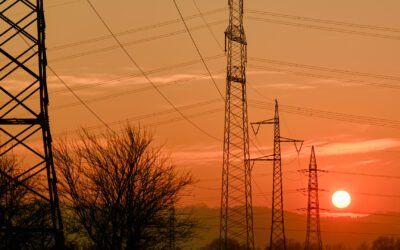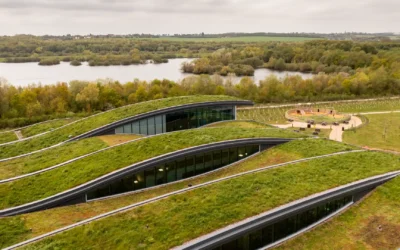- Energy arbitrage can help in shifting demand from peak hours to off peak hours, taking full advantage of price fluctuations.
- Energy storage can adjust the operating point of generators and in turn enhance the efficiency of gas generators.
- Long duration energy storage can reduce the start-up and shut-down costs by curtailing the use of generators in the first place.
- On both levelized cost of energy and levelized cost of capacity, 2 and 4-hour batteries outcompete open cycle gas turbine peaker plants.
This is part two of the article ‘A Primer on Long Duration Energy Storage’ where we discussed promising Long Duration Energy Storage technologies (LDES) including pumped hydro storage, liquid air energy storage, compressed air energy storage, flywheel energy storage, thermal energy storage, hydrogen energy storage and battery energy storage.
In this article, we will further discuss use cases and applications of LDES. However, it is important to state for the purpose of this article and otherwise that PTR considers discharge time of beyond 8 hours to be LDES.
Use Cases and Applications for LDES
The roles that long duration energy storage can play are discussed as follows:
Energy arbitrage
Unlike commodity markets, the electricity market depends on real-time balancing of supply and demand. Grid scale energy storage can be used for generation and for load-leveling. Energy arbitrage is charging batteries during the period of surplus supply (usually periods of low energy prices) and discharging during period of high demand (and high prices). Using energy arbitrage can help in shifting demand from peak hours to off peak hours, to take full advantage of price fluctuations.
Energy storage has been short duration, lasting a few hours, but with the use of LDES, energy use can be shifted over longer periods for instance from a weekend, which is a period of low demand, to weekdays (a period of high demand). Arbitrage with LDES can also be used to smooth out seasonal variations found in renewable energy sources, such as solar and wind.
Improvements in the efficiency of generators
Efficiency of conventional Natural Gas Combustion Turbine (NGCT) and Natural Gas Combined Cycle (NGCC) generators rapidly drops for part load conditions. Energy storage can adjust the operating point of generators and enhance the efficiency of gas generators.. Once the part load point of the generator is adjusted, overall fuel consumption is reduced which in turn reduces the system wide fuel costs.
Reducing the start-up and shut-down costs
The start-up or shut-down of a power plant, be it gas, coal or nuclear, can be an expensive process. For instance, the average cost for startup for NGCT generators is 2000 USD, for NGCC generators about 30,000 USD, more than 12000 USD for coal units and approximately 100,000 USD for nuclear units. Long duration energy storage can be used to feed the grid and reduce the need for starting-up or shutting generators in the first place.
Management of congestion in the system
LDES can alleviate transmission congestion due to transmission capacity constraints by providing power in an alternative manner. Constraints arise when low-cost energy cannot be transmitted to demand centers and huge costs can be associated with such transmission bottlenecks. In addition, LDES can supply electric energy to customers on a temporary basis to determine if a project should be upgraded or not. .
LDES as a peaker plant
Natural gas fired plants or diesel plants usually serve as peaker plants, but this role can be fulfilled with a large-scale battery storage. LDES not only covers the daily peak demand but can also cover the peak demand for a longer period of time.
Australia’s Clean Energy Council recently published a paper claiming large scale battery storage is a better choice to meet peak demand (as compared to gas peaker plants) because of cost effectiveness, flexibility services to the network and emissions reduction. It was found that 2 and 4-hour batteries outcompete open cycle gas turbine peakers on both levelized cost of energy and levelized cost on capacity basis. The comparison was made between the levelized cost of energy generated by a new 250 MW gas peaker plant versus 250 MW four-hour and two-hour grid scale batteries. Four-hour batteries were found to be 30% cheaper whereas two-hour batteries came out to be 17% cheaper.

Figure 1: Energy storage in the modern electricity grid.
Source: OECD/IEA
Looking ahead
In addition to providing power on demand, energy storage technologies have the potential to provide auxiliary services to the electricity grid, ensuring the reliability and stability of the power system, and be a better match to electric generation demand. Of the different types of LDES technology discusses, currently there is no clear winner.
For the most part, pumped hydro has remained the largest source of LDES, although it will be harder to increase capacities of these systems due to environmental constraints. Lithium-ion batteries have been mostly utilized for shorter duration applications but increasing the duration of discharging capability comes with a higher price. Rapidly decreasing battery prices help the case, but as of now, it’s unlikely to consider battery as a very viable source for LDES. Currently, a Liquid Air Energy Storage (LAES) plant is being built and hydrogen powered turbine plant is being proposed, but time will tell if either of these technologies is the winner.
The commercial scale utilization of LDES is also another technical hurdle that needs to be overcome for the LDES technologies to see further growth. LDES will be necessary for renewables to be truly incorporated in the grid and provide a true generation solution. In addition, building enough credibility for investors to actively look to invest in LDES is something that’s not going to be easy.
Recent Insights
Service Overview
More about our Energy Storage Market Research
US Elections: Consequences of a Second Trump Presidency for Energy Sector
The US is making strides to move away from fossil fuels and eventually decarbonize the energy sector. The White House aims to achieve 80% renewable energy generation by 2030 and 100% carbon-free electricity by 2035. On the other hand, for electric vehicles, it has set...
Sustainability Across Sectors: Highlights from GreenTech Festival 2024
Recently, I had the privilege to attend and present at the Greentech Festival, an excellent event in the realm of sustainability. This influential gathering left a profound impact, and I am delighted to share a comprehensive analysis of my experiences. The Greentech...
US and EU Strategies in Smart Buildings
Download Service Overview The EU and USA aim to decarbonize their building sectors to meet emission reduction targets. Initiatives like the Home Energy Rebate Program in the USA and the revised Energy Performance of Buildings Directive (EPBD) in the EU offer roadmaps...
COP through the Ages
This infographic takes a cursory glance at the most significant achievements of the Conference of Parties through the years and offers a chance for introspection on whether these pacts and declarations added any value in the bigger pictureContact Sales: sales@ptr.inc...



